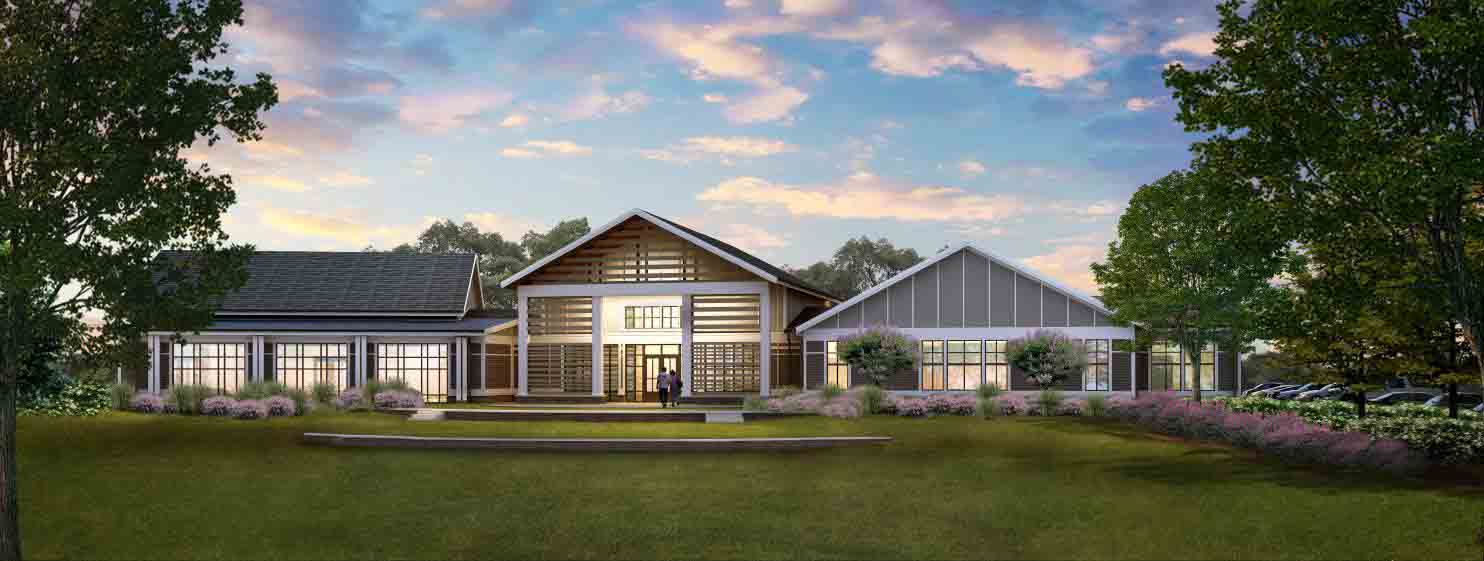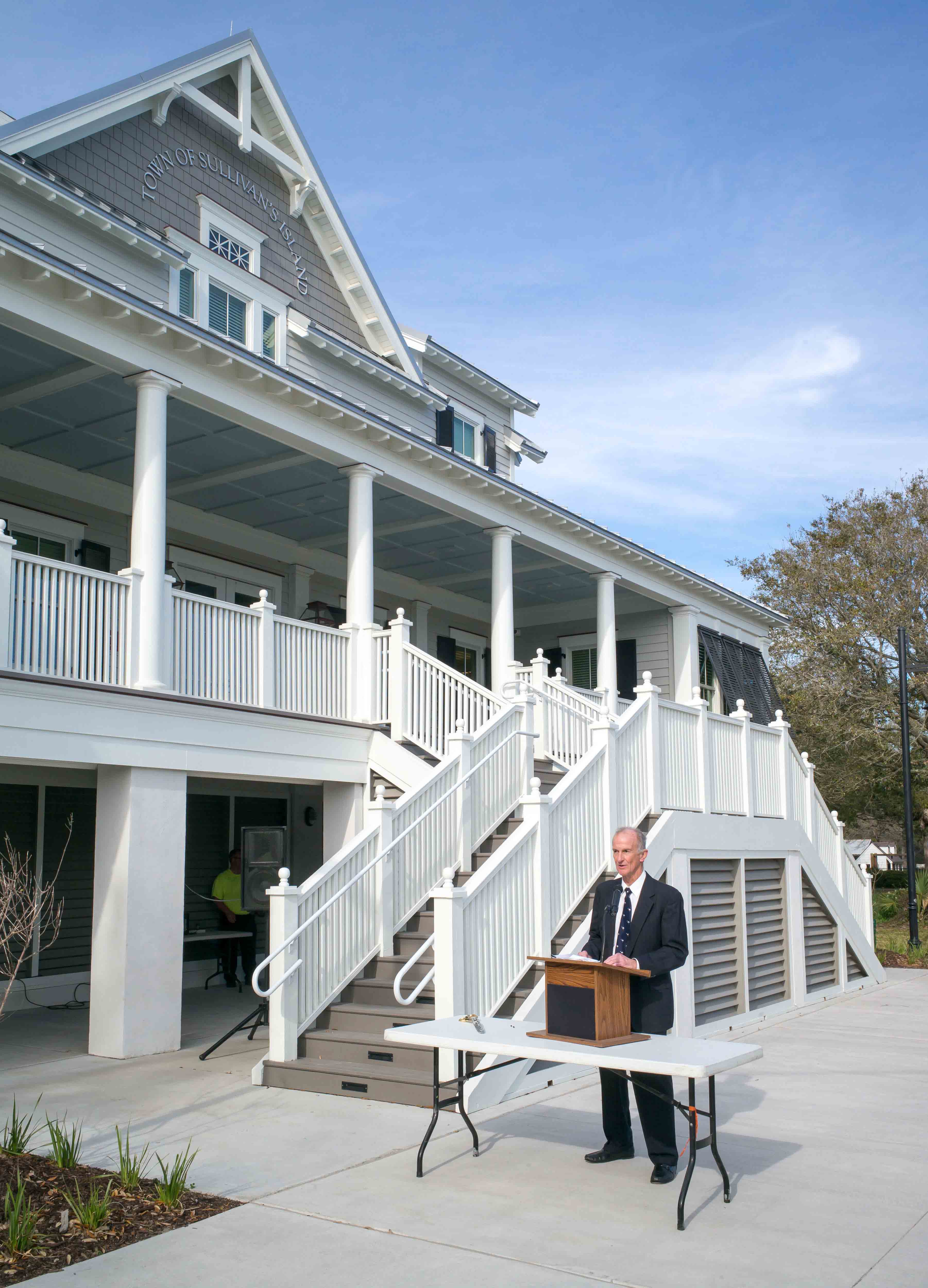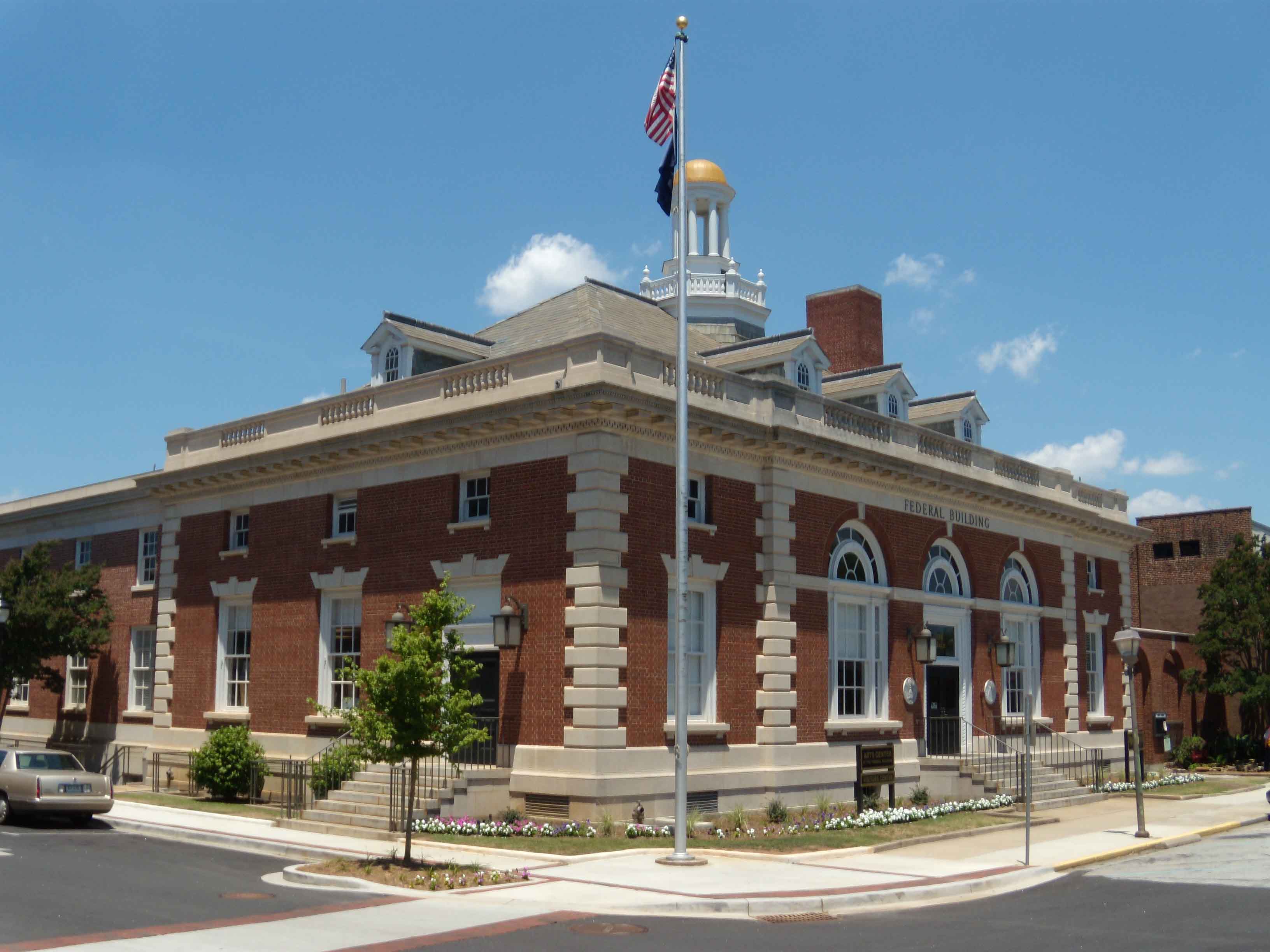From adding bike racks to using recycled building materials, cities and towns are designing new buildings (or rehabilitating old ones) with the future in mind. The benefits are clear — Green building practices improve energy efficiency and lead to long-term savings while minimizing facilities’ toll on the environment.
Among cities’ and towns’ considerations when planning new facilities are the use of green building materials, sustainable land use and transportation, water conservation measures and waste reduction and recycling.
The Town of Kiawah Island worked with an architecture firm to design a town hall with several sustainable features, project architect David Burt said.
Since so many people ride bicycles on the island, the building’s design included a path from the street and bike parking next to the building. It also has a shower facility in a garage building for bicyclists who need to clean up after a ride.
Burt said they maintained existing open space at the site and included some pervious pavement areas to minimize the impact on drainage. They are using drip-irrigation and native plantings. Once the plants are stabilized, the consumption of water for irrigation can be eliminated altogether.

An architect's rendering of the new Kiawah Island Town Hall./Kiawah Island
Kiawah Island Town Hall also conserves water by using low-flow plumbing fixtures. Fixtures for LED bulbs, which stand for light-emitting diodes and produce light more efficiently than some other types, are located throughout the facility to minimize electricity consumption. The building has an energy efficient air conditioning system and a thermally insulated continuous building envelope.
There is a clear difference.
“Typical construction methods include stuffing batt insulation - the pink stuff - in between the metal studs along the exterior wall. With that method there is a thermal break at the metal studs,” said Burt. “To make the building envelope more energy efficient, we added a layer of rigid insulation on the outside face of the metal studs. To make it continuous, the rigid insulation continues up the wall and over the roof trusses.”
The building also has several zones with thermostat controls, so occupants in separate spaces can make adjustments. Many of the materials used to construct Kiawah Island’s building are recycled materials. For example, Burt said, all the steel in the building is made of 95 percent recycled material.
“A sustainably designed building is a comfortable place to work because it has views to the outside and lots of natural daylight. You will be hard-pressed to find a space in this building that doesn’t have both,” Burt said. “This building was designed with all of these (factors) in mind, and culminates in a very thoughtful and well-designed building.”
Positive effects on employees and residents
The City of North Charleston’s new public works complex also was built with the environment in mind, said Ray Anderson, assistant to the mayor.
“Municipal governments should be good stewards of natural resources and instill the concepts of efficient building techniques in the facilities we are responsible for,” he said. “In all cases, efficient building techniques equate to healthier buildings, which have a positive impact on the occupants, our employees and residents.”
To encourage emissions-free transportation, the North Charleston complex has bicycle racks to accommodate 36 bikes, as well as 12 showers located on-site for those riders.
A 14,000-square-foot courtyard provides open gathering space, and water-efficient landscaping is used throughout the grounds, which feature some native and drought-resistant plants.
The complex has features such as a heat island-effect roof, constructed with roofing materials that have a high solar reflectance index. The building captures rainwater from roof structures, condensate from HVAC drains and waste water from restrooms, and pipes it to storage tanks for use as grey water.
The building has energy efficient appliances and windows, and a lighting system with occupancy sensors and central controls. Numerous large windows also provide an abundance of lighting from sunlight.
Cooling measures
When the Town of Sullivan’s Island looked to build a new town hall and police headquarters, officials wanted an attractive but efficient structure that would serve the community for decades.
“Achieving the proper balance of aesthetics, cost and function, while respecting the natural and built environments is a founding principle in the design of the Sullivan’s Island town hall and police headquarters,” said Town Administrator Andy Benke.

Sullivan's Island Town Hall had a dedication ceremony this year./Steven Rosalmilia of Island Eye News
To address the coastal town’s issues of heat and humidity, the design included a well-insulated building with shading devices. Large overhangs, porch roofs and Bahama shutters shade the windows without decreasing the natural daylighting from the adjacent rooms. Insulated windows with a special coating also contribute to reducing heat loads. Materials such as light colored metal roofing were used to help deflect the heat and ultimately reduce the town’s demand on the HVAC systems.
The building’s energy efficient design also included careful planning on the sizing and placement of the HVAC system to allow occupants in different zones of the building to control temperature. In addition, long-life and low-energy consuming LED fixtures were combined with occupancy sensors to eliminate wasteful lighting of unoccupied rooms.
Using what they have
Sustainability measures are not only achieved through new construction, however.
The City of Cayce received a $5,000 energy efficiency grant from the S.C. Office of Regulatory Staff to purchase LED lights for its municipal complex and utility compound. With the grant, the city purchased 66 LED lights in a variety of wattages to use at City Hall. The new lights replaced inefficient, exterior metal halide bulbs.
City officials expect the new bulbs to provide both energy and cost savings. Quality LED light bulbs last longer, are more durable and offer comparable or better light quality than other types of lighting. The grant — Cayce’s first one geared toward energy efficiency — is part of City Hall’s move toward greener operations, said Ashley Hunter, city spokesperson.
The City of Greenwood decided to renovate a historic building rather than demolishing it and constructing a new facility in its place. The 25,000-square-foot former federal courthouse and U.S. Post Office is now jointly owned by the city and Greenwood County. It was donated in 2006 through a U.S. Department of the Interior program. The Self Family Foundation contributed $1.8 million for the renovation of the facility as the Arts Center.

Greenwood's federal building was repurposed./Greenwood
The city and county entered into a concessions agreement with the Arts Council to operate the building. The building now offers an art gallery, a gift shop, visitors’ center and office space for the Arts Council of Greenwood. The former federal courtroom has been converted into a multi-purpose social hall. The basement of the building is used for arts and cultural classrooms, artist-in-residence space and storage. The facility also features a multi-purpose outdoor courtyard that is used year-round for events and gatherings.
The Arts Center is the hub of the shopping and dining area known as Uptown Greenwood, said City Manager Charlie Barrineau. In Greenwood’s case, it was better to repurpose this building instead of constructing a new one.
“Cities set the tone and culture of where and how we shape our communities,” Barrineau said. “By promoting historic preservation and reuse, the City of Greenwood is promoting long-term sustainability and reducing sprawl.”
